The most famous destination in the world to see mountain gorillas is Rwanda's Volcanoes National Park, the place where conservationist and primatologist Dian Fossey worked until she was assassinated in 1985. Her activism against poaching, in addition to her research, is widely recognized as paramount to the protection of gorillas and their population increase in the years following her death. Today, tourism is also credited with helping to protect gorillas, by creating a financial incentive for local communities and governments to establish anti-poaching patrols around their habitat. Notably, in 2018, gorillas were downgraded from the "critically endangered" species list to the "endangered" species list, following their population growth, which is now estimated to be above 1,000.
There are only two main habitats where mountain gorillas reside, spanning the borders of three countries: Rwanda, Uganda, and the Democratic Republic of the Congo. Despite Rwanda's notoriety, the majority of the mountain gorilla population exists in Uganda, and one of the best places to see them is Bwindi Impenetrable Forest – where I visited while backpacking Africa.
I spent five months in Africa. I went on numerous safaris, hiked to the top of world-famous mountains, and saw natural wonders that you'd recognize from coffee-table books.
Seeing the gorillas is easily in my top-five, must-do experiences in Africa before you die.
Even thinking about the experience now brings tears to my eyes. Why?
Witnessing the gorillas in action was like seeing us.
I have never, and will never, see another animal again whose behavior and mannerisms so closely resembles humans. It touched me to my core, flooding my body with this immediate recognition. You cannot witness the gorillas and not know intuitively that we evolved from these animals – and as much as we'd like to pretend otherwise, we are still animals too.
Animals can be brutal to each other. They have no ethics or morals, these mind-concepts created by humans. They have survival instincts – what's best for the tribe is best for them – and within the innate drive to survive there is love. It had not occurred to me before watching the gorillas that you can't survive without selfless love – but it's true. Every being must be loved by another long enough to survive. And then it is their turn to do the same for the next.
For life to work, beings have to care for each other – especially when they are vulnerable.
I watched a mama gorilla with her baby – a baby that bore an uncanny resemblance to a human baby – and the way that she held him, moved him, interacted with him. I watched the way that he clung to her for safety, for reassurance that everything would be alright. During the hour that I spent with the gorillas, I saw their humanity, or the potentiality for it, and I felt our place in the ecosystem of life.
Observing the gorillas connects the human soul to all animals – and all life – on the planet.
We are all here living with the land, trying to survive, to live long enough to usher the next beings through the cycle of life. Everything else that humans have created is a distraction from that core truth.
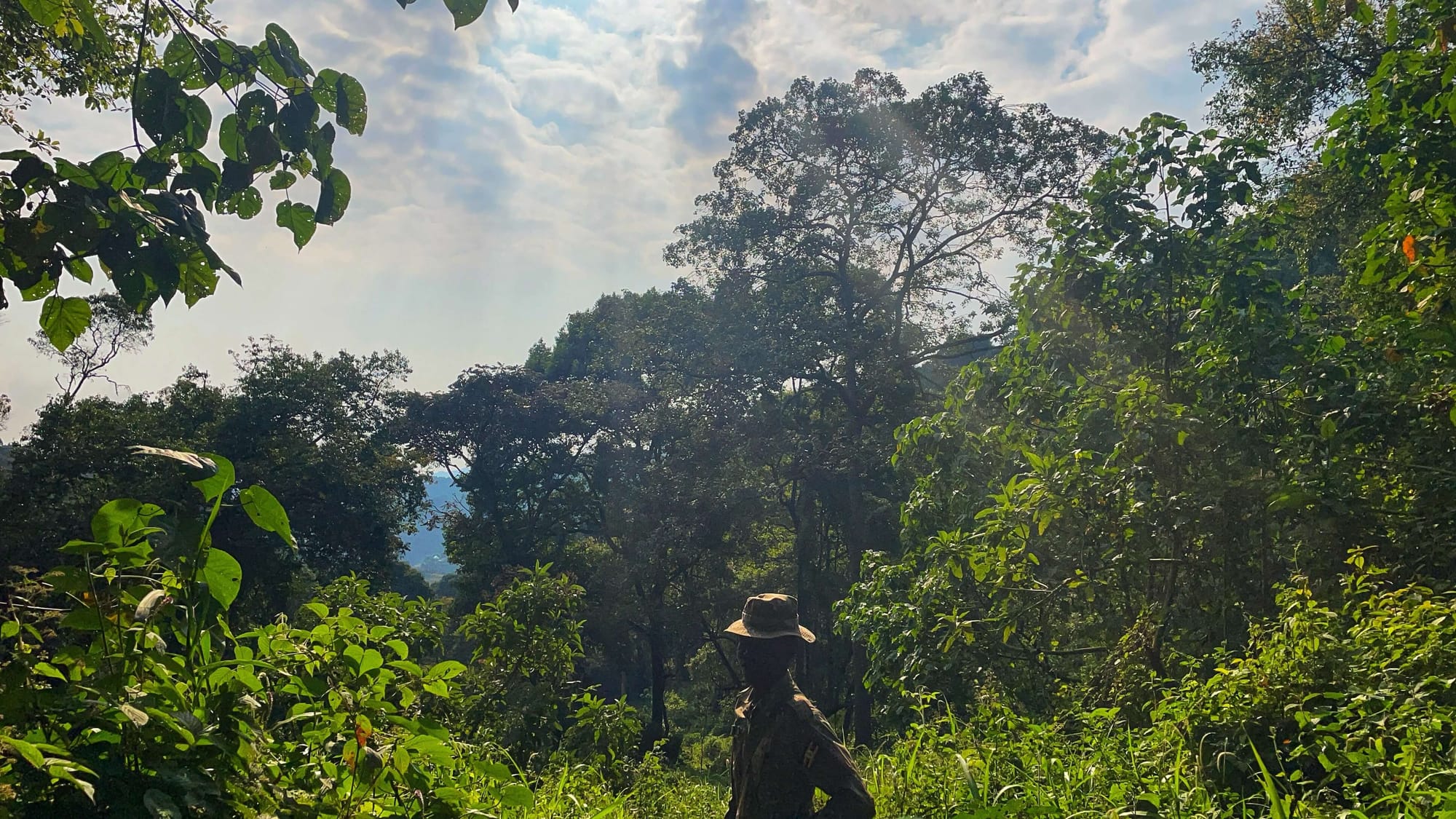
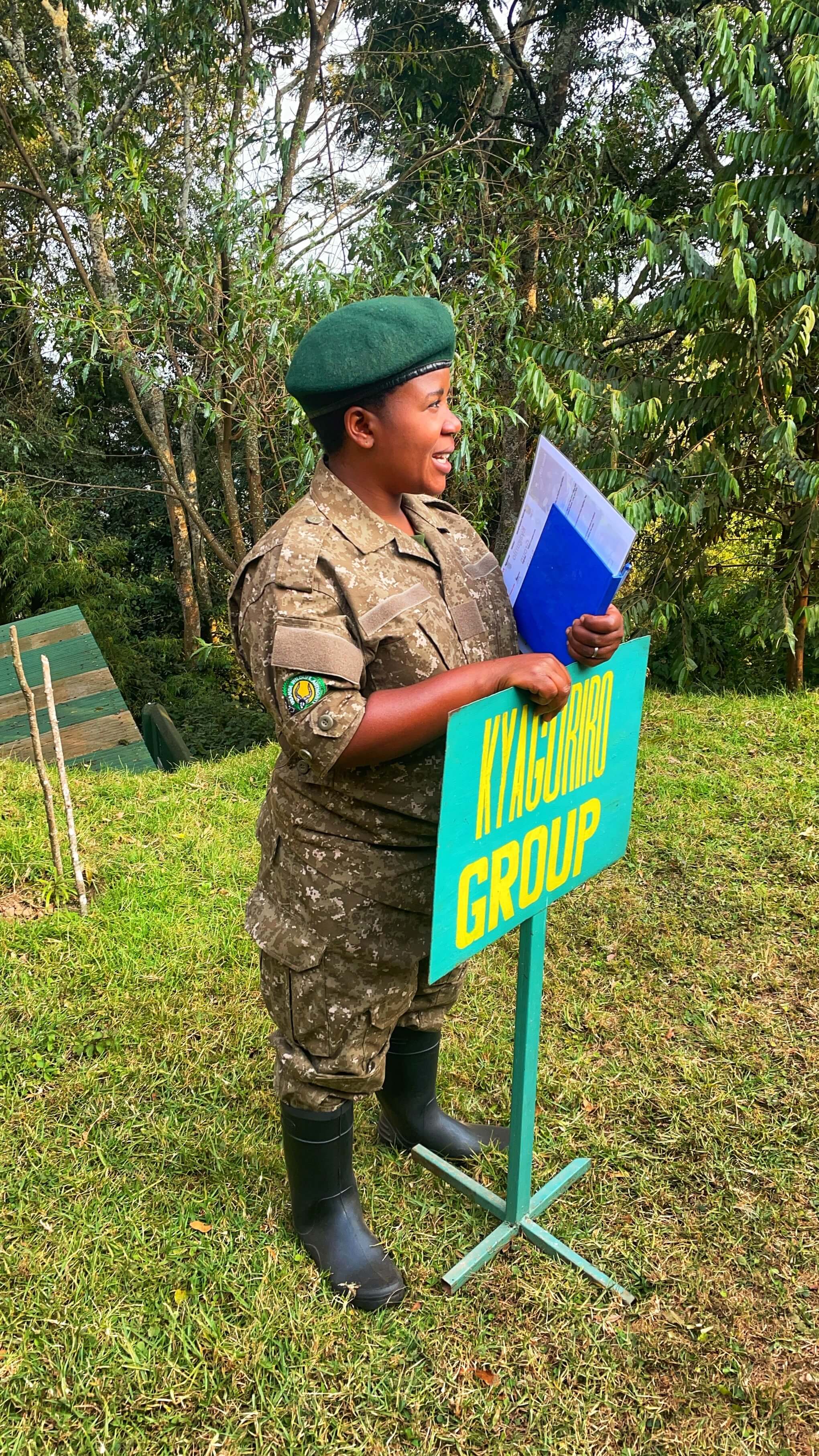
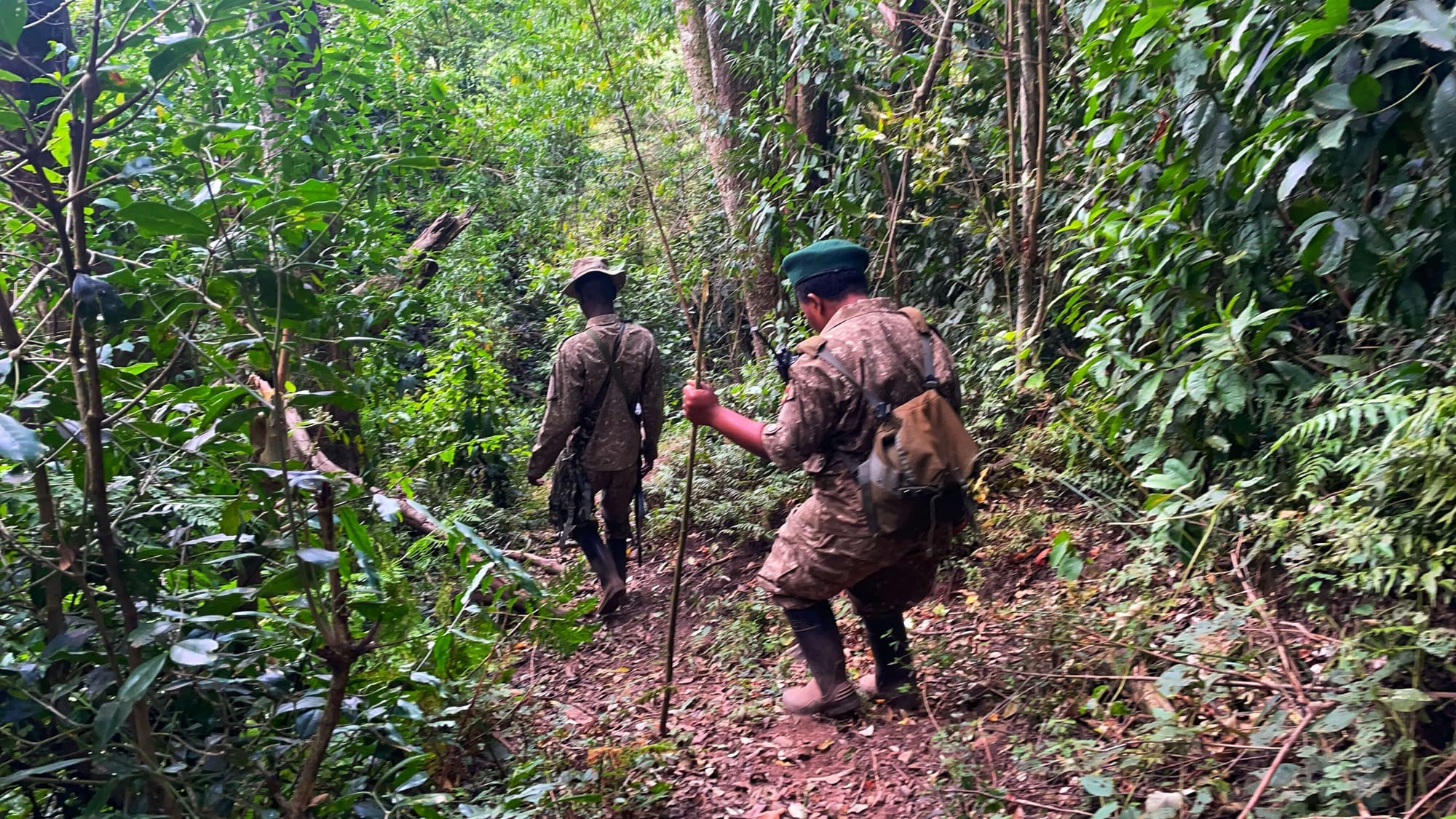
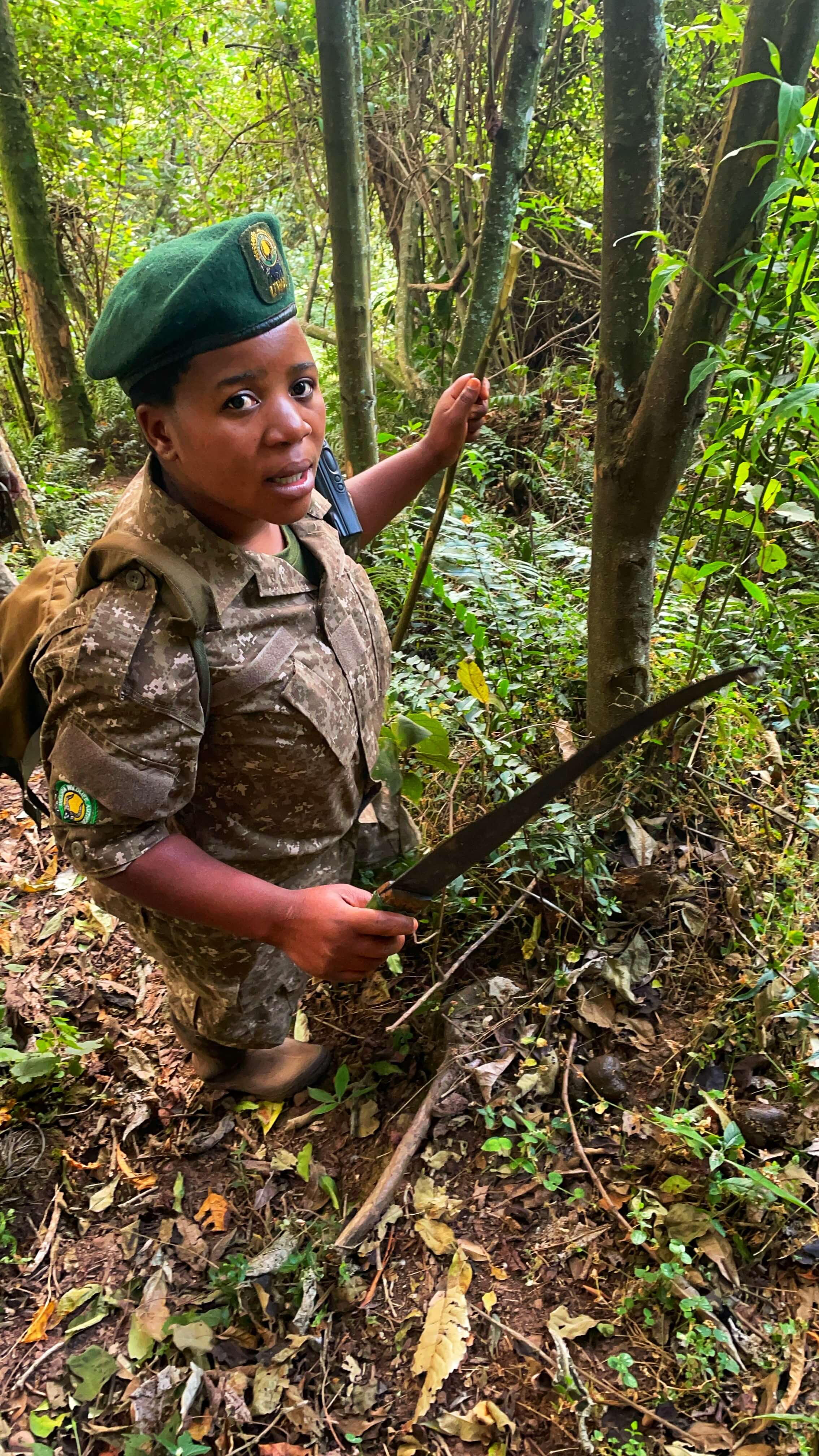
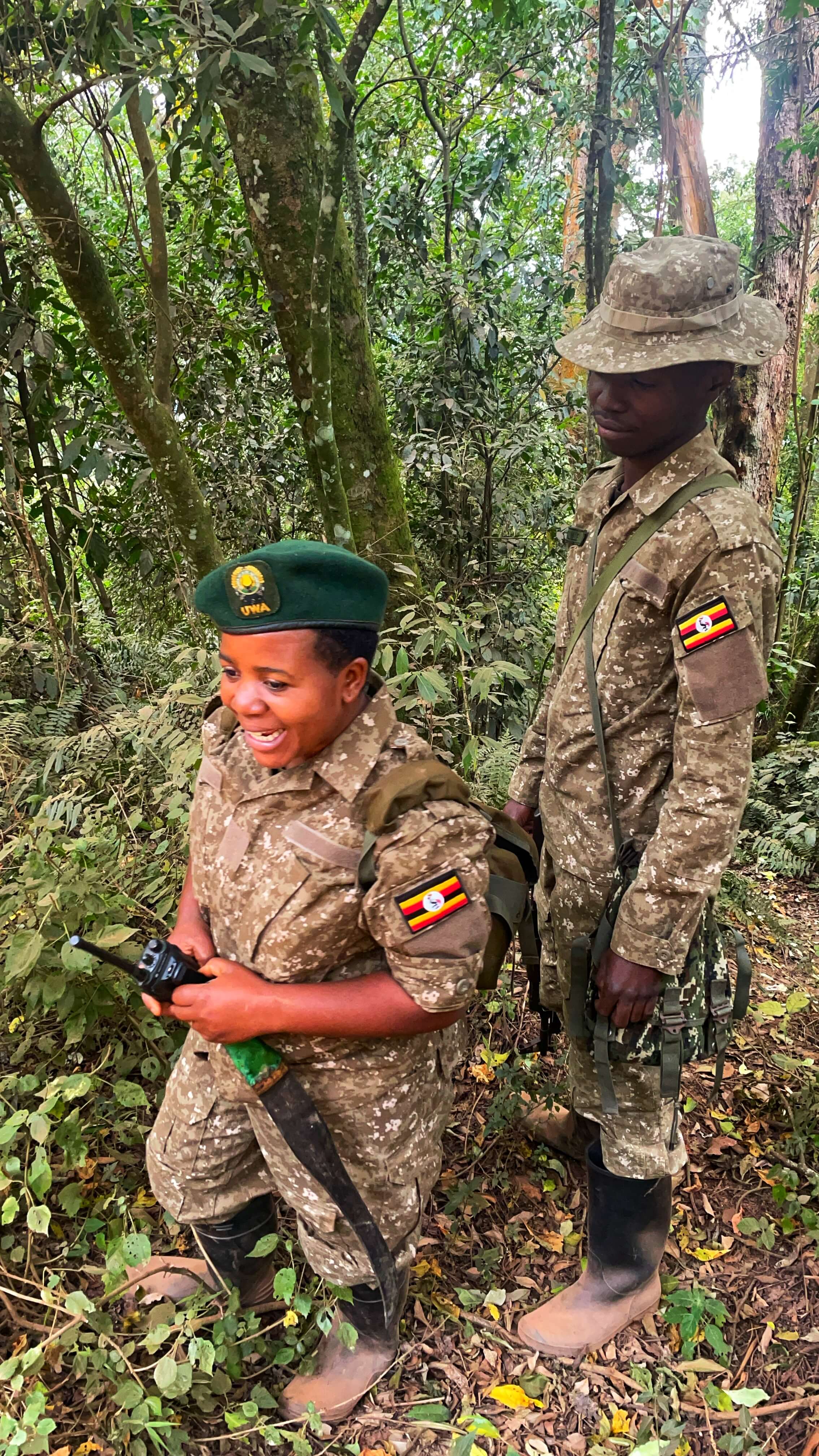
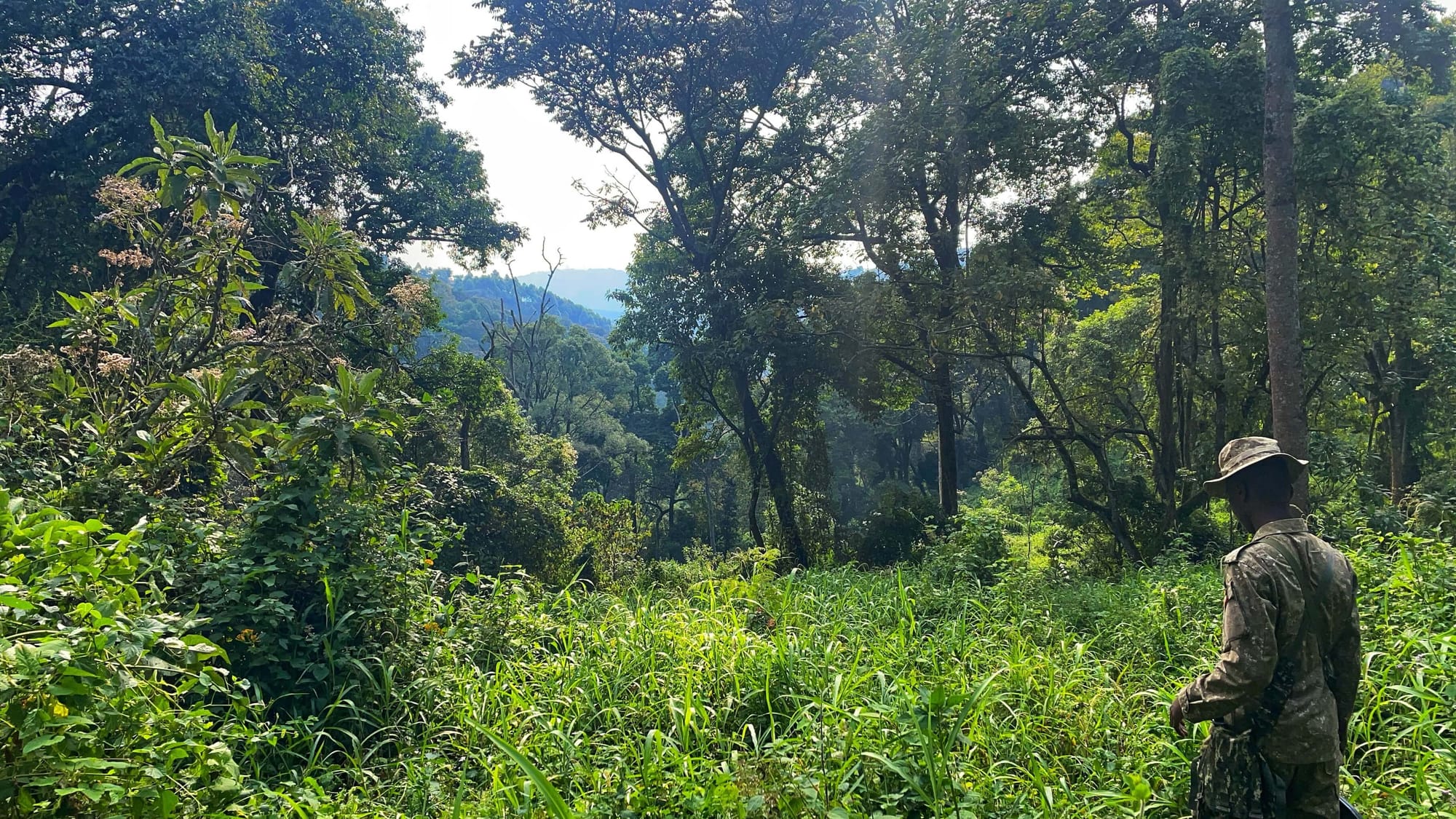
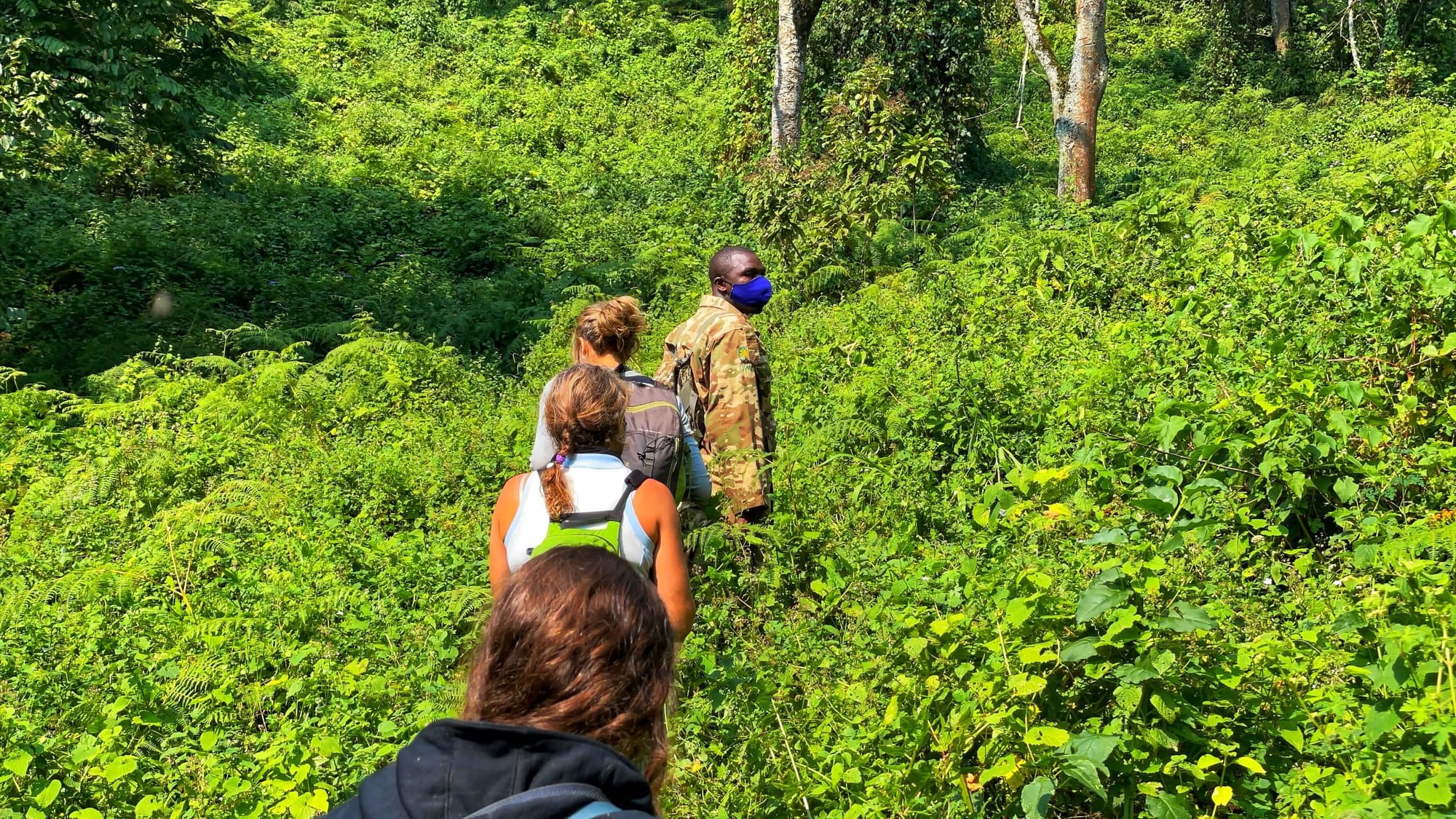

Left to right, from top - Click any image to view larger: (1) We were given a briefing from the lead ranger at the beginning of the trek. Our gorilla family, the Kyaguriro group, consisted of one silverback (male) and four adult females, one of which had recently given birth to a baby male gorilla. She also was the daughter of one of the other adult females in the group. (2) The climb down into the jungle was steep and slippery at times. (3) Our lead ranger machete in hand, points out some gorilla poop. (4) Walkie-talkies are used to communicate with the trackers so that our rangers know where to lead us. There are trackers following each gorilla family 24/7 to protect them from poachers, in addition to maintaining their whereabouts for tourist purposes. (5) The views in Bwindi are stunning -- don't forget to look up 😉. (6) Because gorillas and humans share so much of the same DNA, human diseases such as COVID can be transmitted to gorillas. Even though we maintained well over six-feet distance from the gorillas, we were required to put on masks when we got close to the gorillas for their safety. (7) Searching for the gorillas.
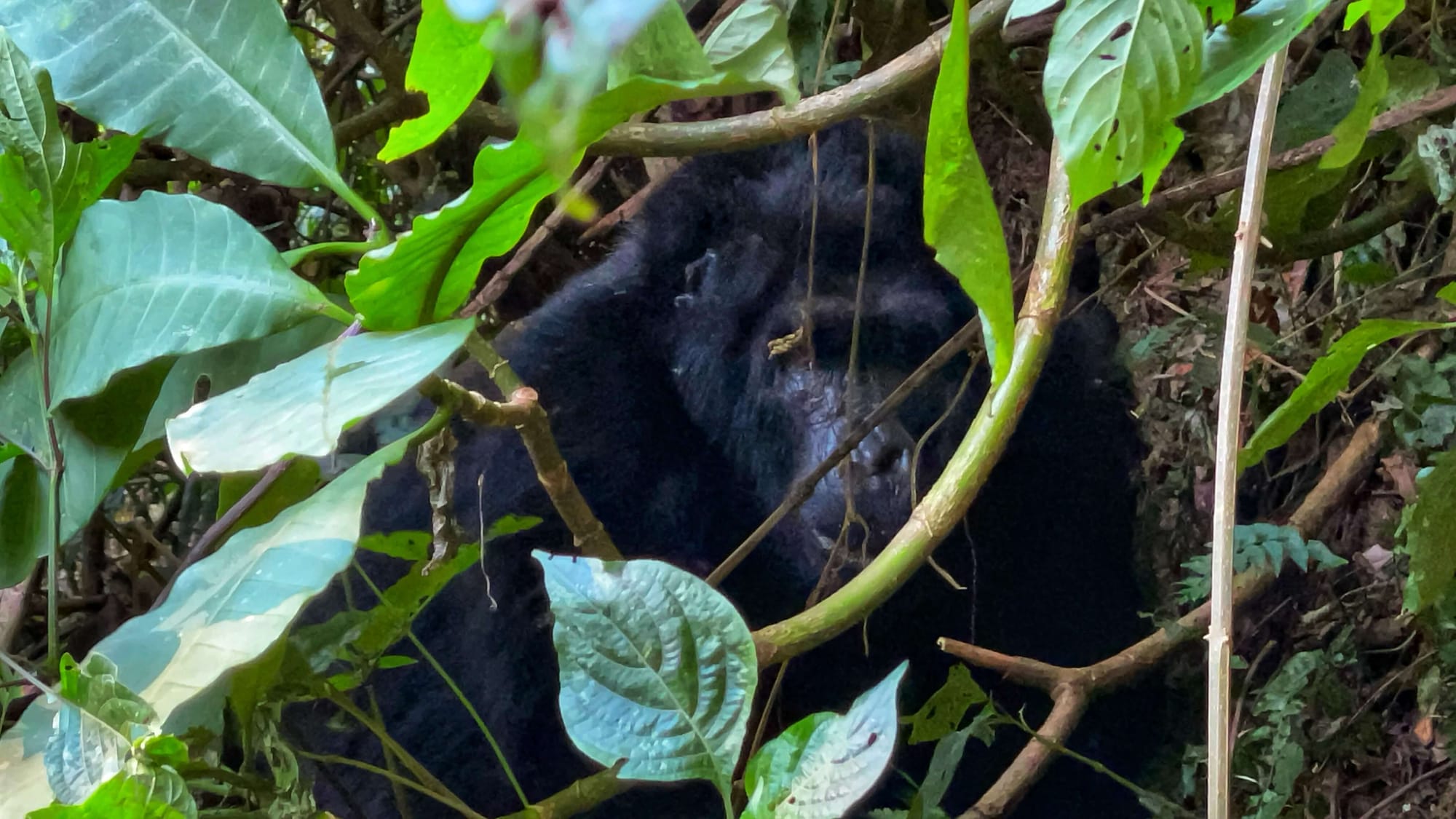
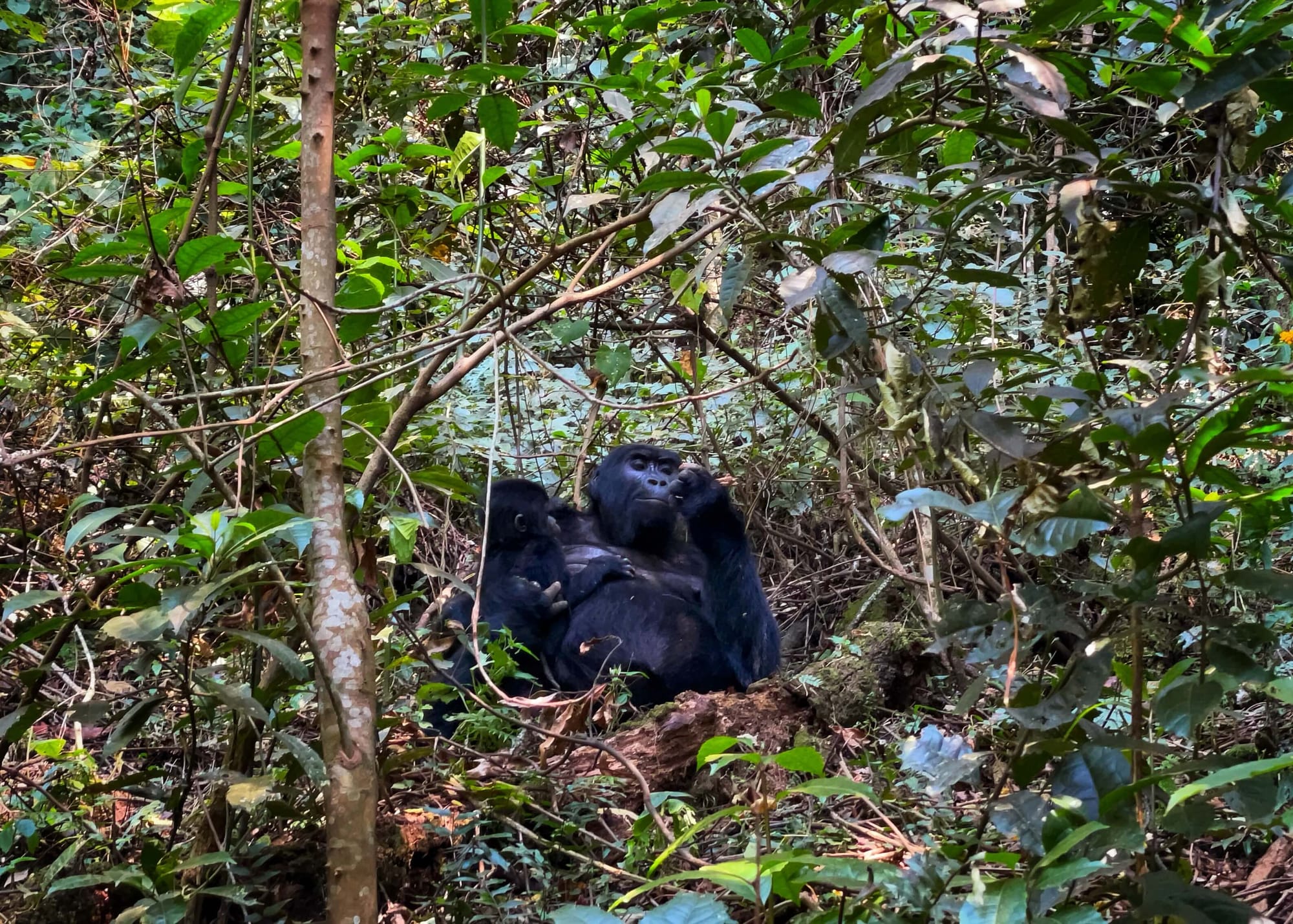
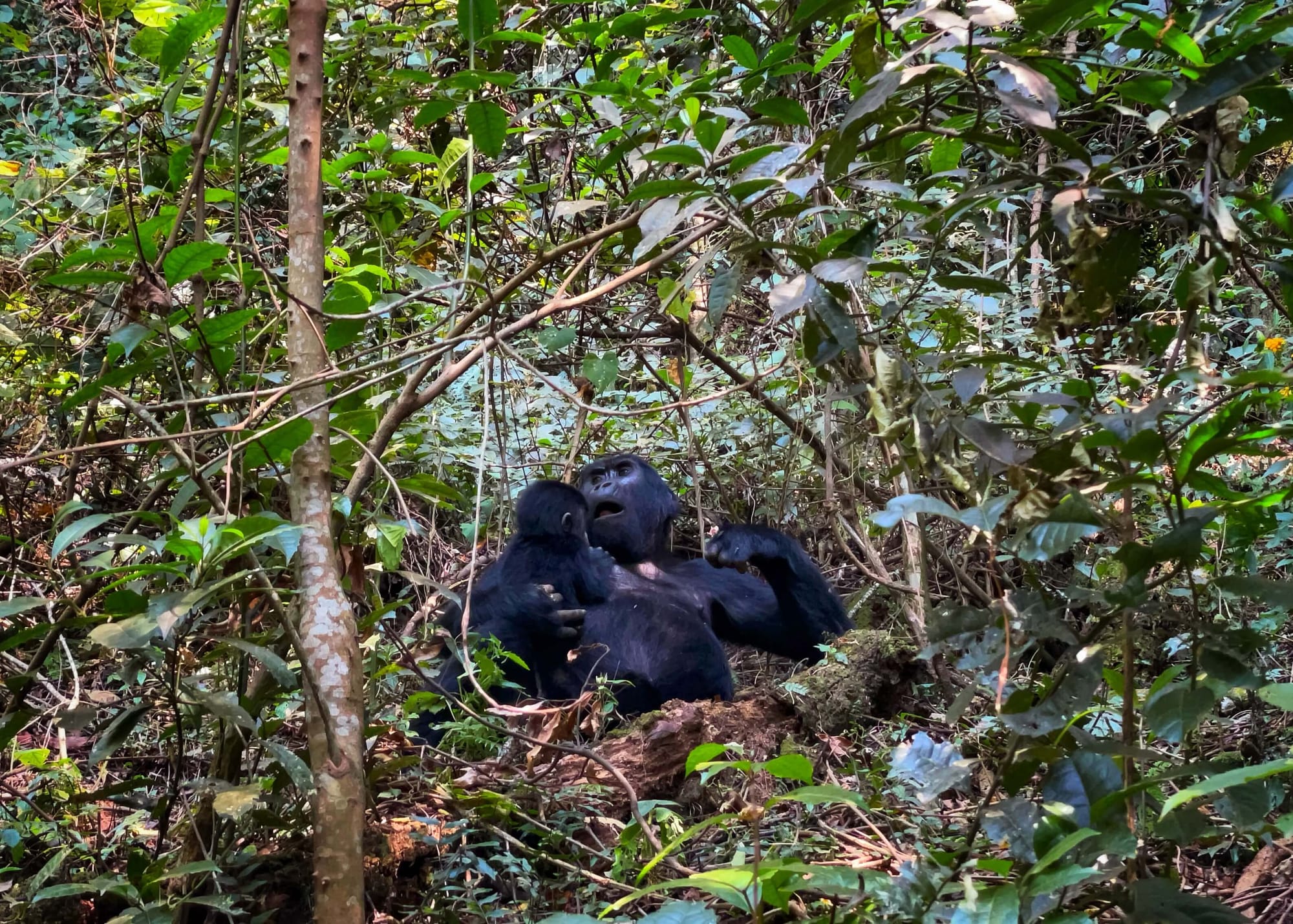
Mom and baby relaxing in under a canopy of leaves. Click to view larger.
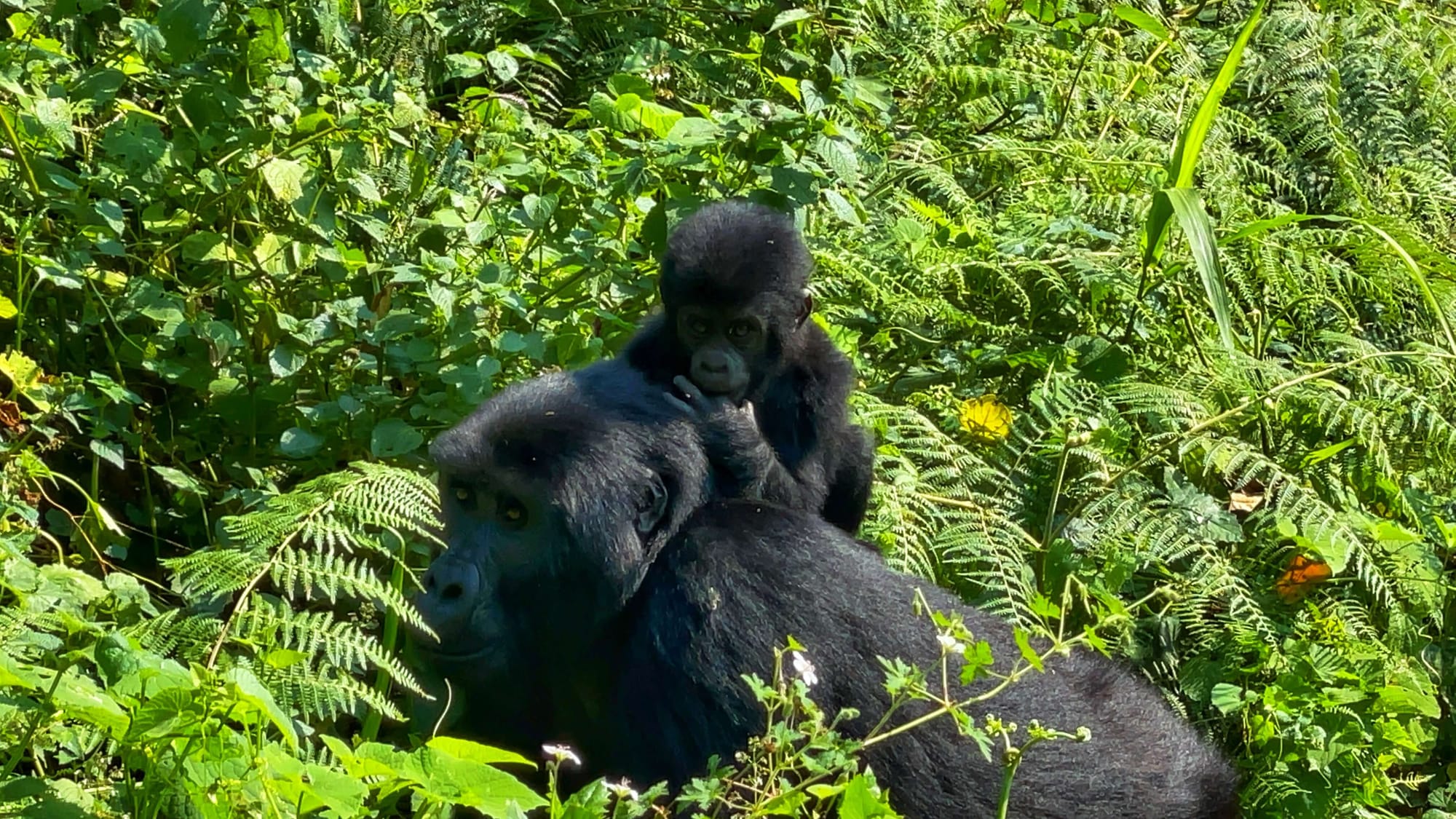
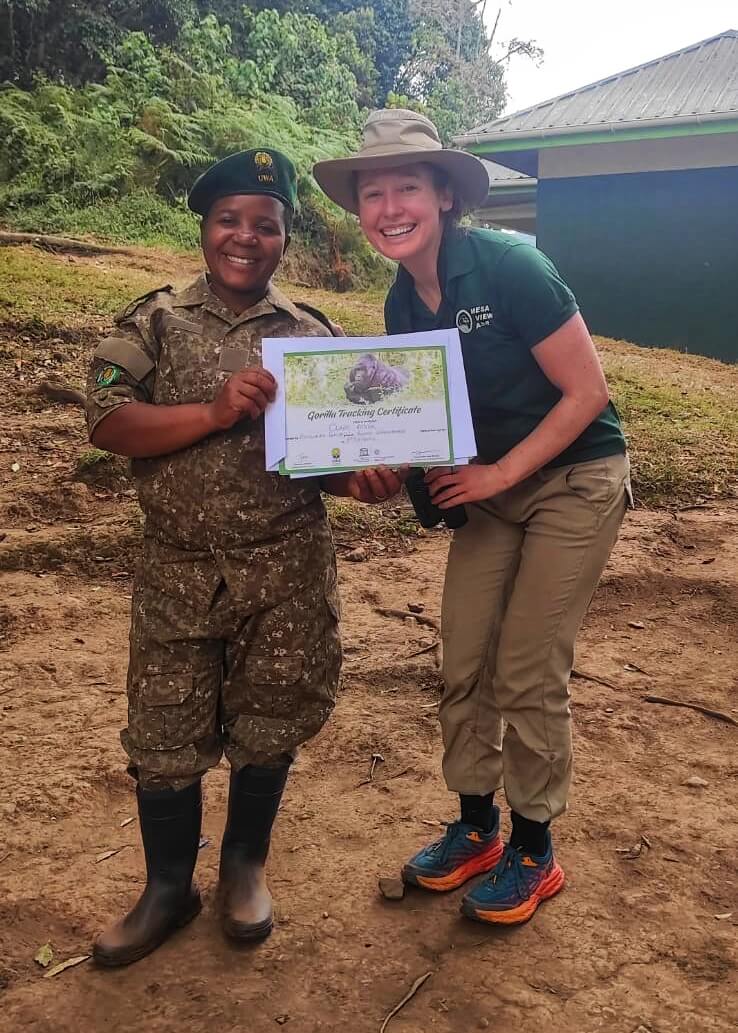
The Highlight Reel
vs. Reality
Most of gorilla tracking will look like this. We were so lucky that our family ventured out into a sunny, open valley for us to get a good view.
Inspired to have this experience for yourself? Here's how you can do it.
How to Track Gorillas in Uganda
In order to go gorilla tracking, you must purchase a permit at the Uganda Wildlife Authority (UWA) headquarters in Kampala. Uganda changed the rules a few years back which allowed tourists to purchase their own permits. Now you have to buy through a tour operator, so you're not actually going to be getting it for $800.
Here's everything you need to know about how to book a gorilla tracking tour in Uganda without overpaying for it – and how to do it without one.
Paid subscribers have access to the remainder of this post, which includes details on how to go gorilla tracking – and how to avoid tour companies up-charging for the experience. Log in or upgrade your membership to access!



